AERO showcases electric aviation
The United States has Sun 'n Fun and EAA AirVenture, but in Europe the annual general aviation show is AERO Friedrichshafen—AERO, for short. This year’s event, the twenty-sixth, drew 630 general aviation exhibitors to the convention site, located on the grounds of the Friedrichshafen, Germany, airport, by the shore of Lake Constance.
To be sure, there were plenty of U.S. airframe and other manufacturers, service providers, and vendors at AERO, reflecting the show’s increasingly global reach. But make no mistake, there’s a distinctly European atmosphere. Especially this year, with a tone placing heavy emphasis on developments in the growing electric aviation segment, as evidenced by what this event calls its e-flight-expo. Often, it seemed as though the words “AERO” and “e-flight-expo” were spoken in the same breath.
Magnus Aircraft eFusion
This is a joint effort between Hungarian airframer Magnus Aircraft Corp. and Germany’s industrial giant Siemens, which provides its SSP-55D, 75-horsepower electric motor. The eFusion’s lithium-ion battery can power the airplane for 40 minutes of flight and needs an hour to fully recharge. This experimental, 110-knot two-seat design—which made its first public flight at AERO—is but one offering on display. Another experimental Magnus design uses a hybrid propulsion system consisting of a 100-hp Siemens electric motor plus an 80-hp Fly Eco diesel engine, which is based on the Mercedes-Benz Smart auto engine. It can cruise at 90 knots and, when using diesel power, can fly as far as 215 nautical miles on eight gallons of fuel. Currently, an eFusion is based at the Waco, Texas, airport, where it’s undergoing hot-weather testing.
The +3/-3G eFusion is being touted as a low-cost trainer, but it’s not for sale and like its hybrid cousin it’s more of a testbed for Siemens to explore future iterations of a range of electrically powered aircraft, including four-seaters and more. For example, Siemens is testing one of its two-megawatt/2,600-hp electric motors on a Bae 146 regional airliner.
ΦNIX
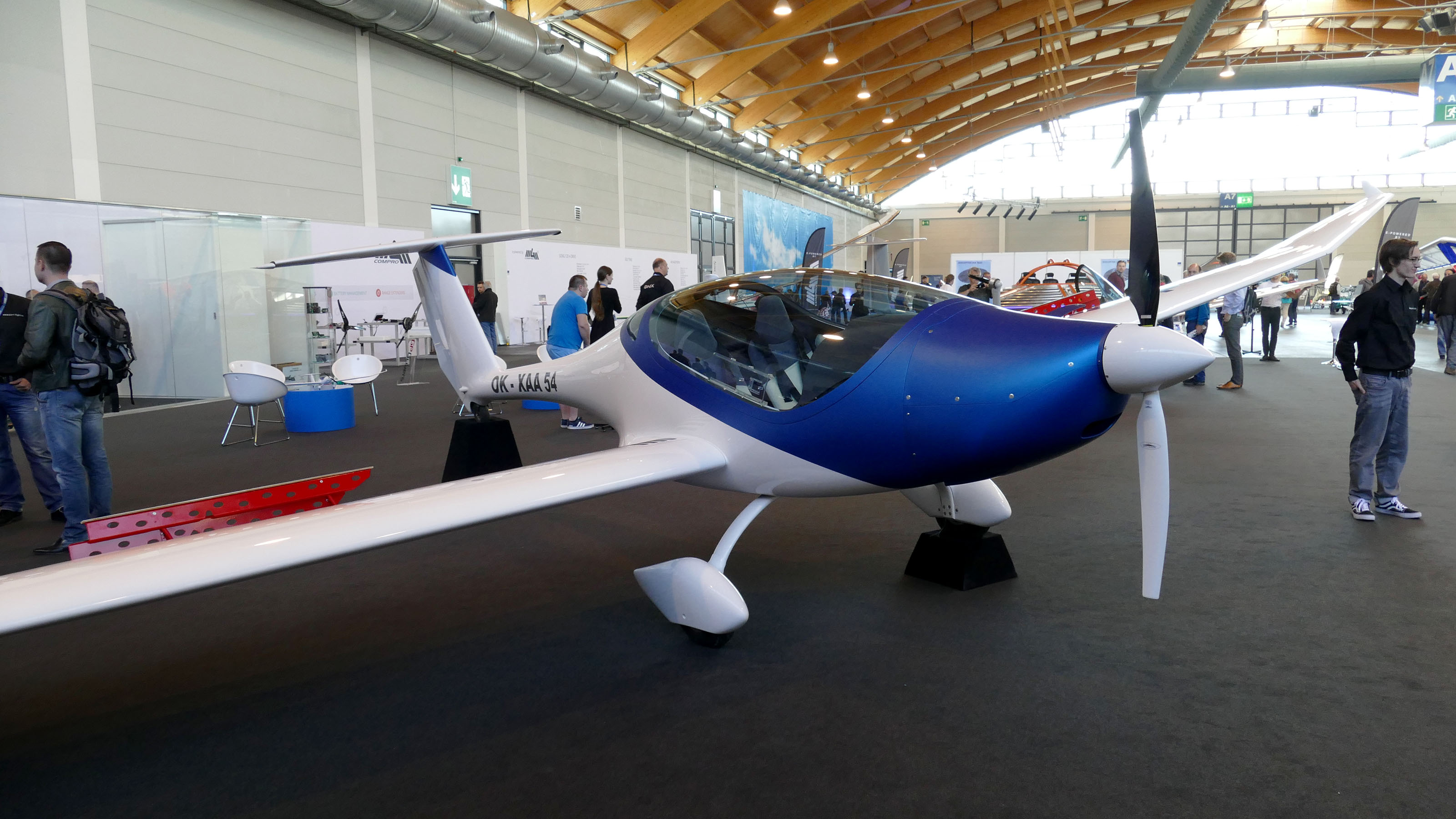
This Czech-built motorglider uses a 60-kilowatt/80-hp electric motor for self-launches as well as other phases of flight, and under power can cruise at 108 knots and fly as long as 2.5 hours on a single charge of its lithium-ion battery. Maximum glide ratio is 1:32. It can be ordered with wingspans of 11 or 15 meters. European LSA certification is expected by May 2018. The company also offers charging units, one of which is capable of charging both the electric airplanes and electric cars. Hold your breath, because avionics-equipped airplanes will sell for 235,000 euros; the largest charging station will go for 48,000 euros.
Antares E2
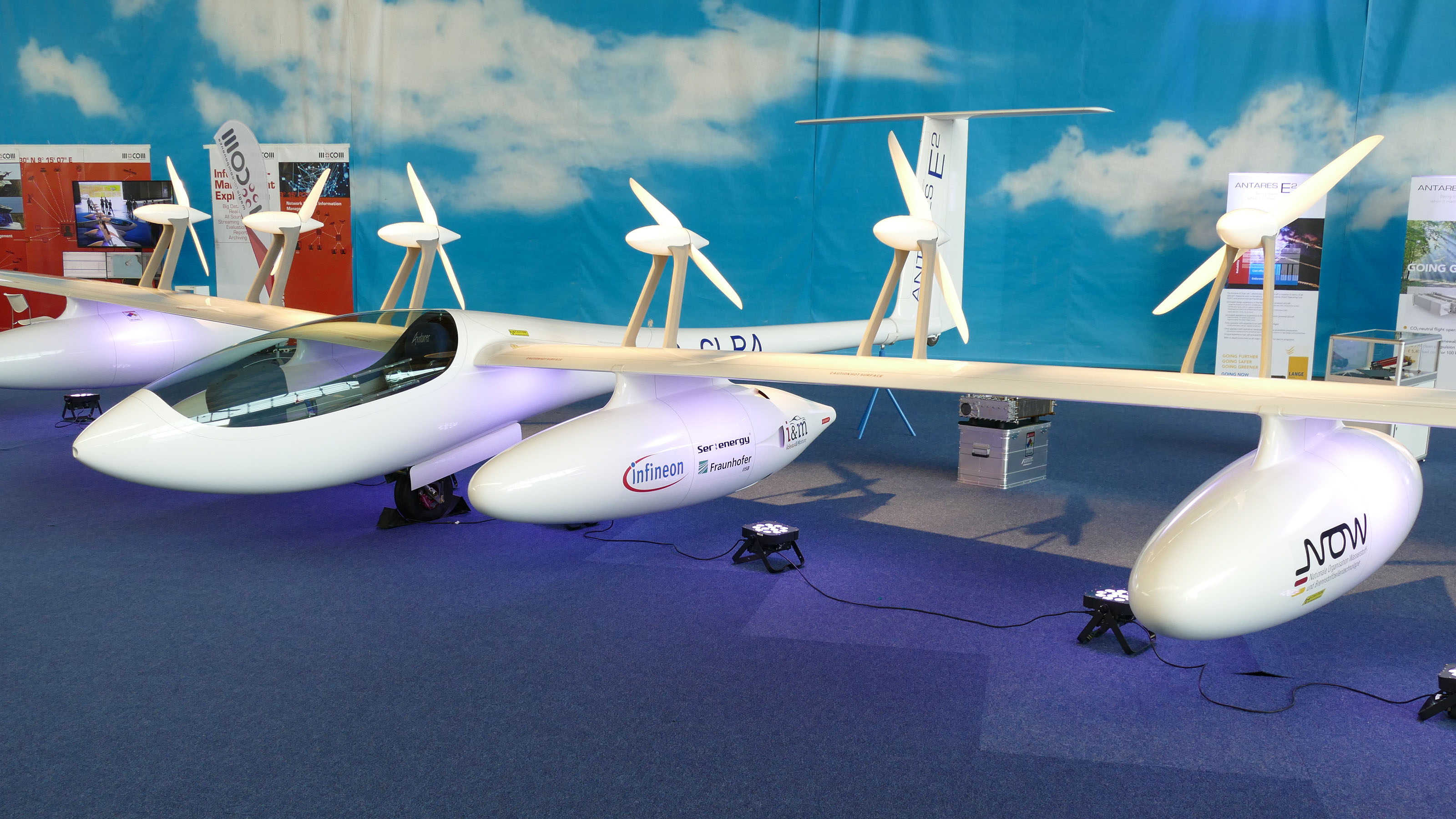
This is not a true general aviation airplane, but its features are noteworthy. Built by Germany’s Lange Research GmbH, this six-motor design has a 75-foot wingspan, can cruise at 135 knots, and has a 40-hour endurance. Intended for use in surveillance roles, the E2 uses six methanol-powered fuel cells and dual batteries in a hybrid propulsion setup that generates enough power to provide ice protection of leading edges and enough energy to drive radars and other high-end surveillance gear. It has a 3,638-lb max takeoff weight, can hold 660 pounds of methanol in two underwing pods, and carry a payload of 440 pounds. Manned and unmanned versions are being developed. The E2 on display was a mockup; first flight of the real airplane is set for June 2018. Government agencies are the target customers. If you want one of your own, hold your breath once more: It’s price is $2 million.
Pipistrel Alpha Electro
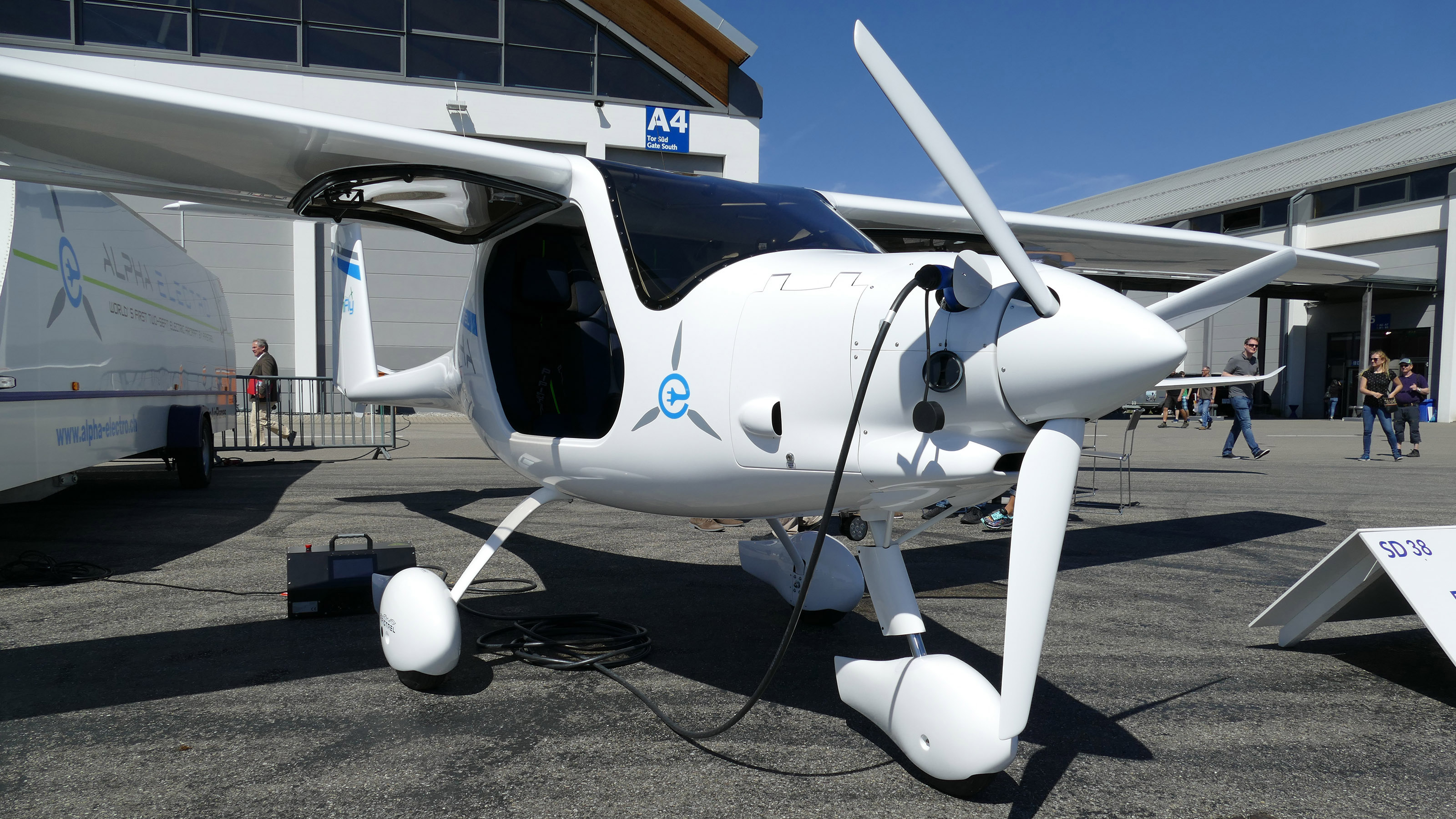
This two-seat trainer is powered by a 60 kW/80-hp electric motor and can fly for an hour on a single charge of its lithium ion battery. Six airplanes have recently been exported to the United States. Four of these will serve as trainers under the CALSTART program for disadvantaged and unemployed youth at the Mendota and Reedley, California airports, and the other two are owned by Tomorrow's Aeronautical Museum in Los Angeles. Two simulators have also been shipped, with three more on the way, and eight more aircraft are on order. According to Michael Coates, Pipistrel’s master distributor for the United States, these Alpha Electros have been signed off to legally fly, even though the FAA’s light sport airplane (LSA) rules don’t quite yet endorse electrically powered flight. “Procedural changes to LSA rules allowing electrically powered aircraft have already been made internally by the FAA,” Coates said. “And now the new rules are on the way to being published.” Coates says 50 percent of the cost of the CALSTART airplanes is being funded by pollution penalties paid to the California government by Volkswagen. The terms of a Volkswagen illegal-emissions settlement require that more than $1 billion be invested in a California “green fund” to benefit environmentally friendly projects. Price of the Alpha Electro is $118,000, which includes a charger. Six more are on the way to California customers.
Elsewhere, some 20 Alpha Electros have been shipped worldwide, to customers in Australia, Canada, Switzerland, France, and the Benelux nations.
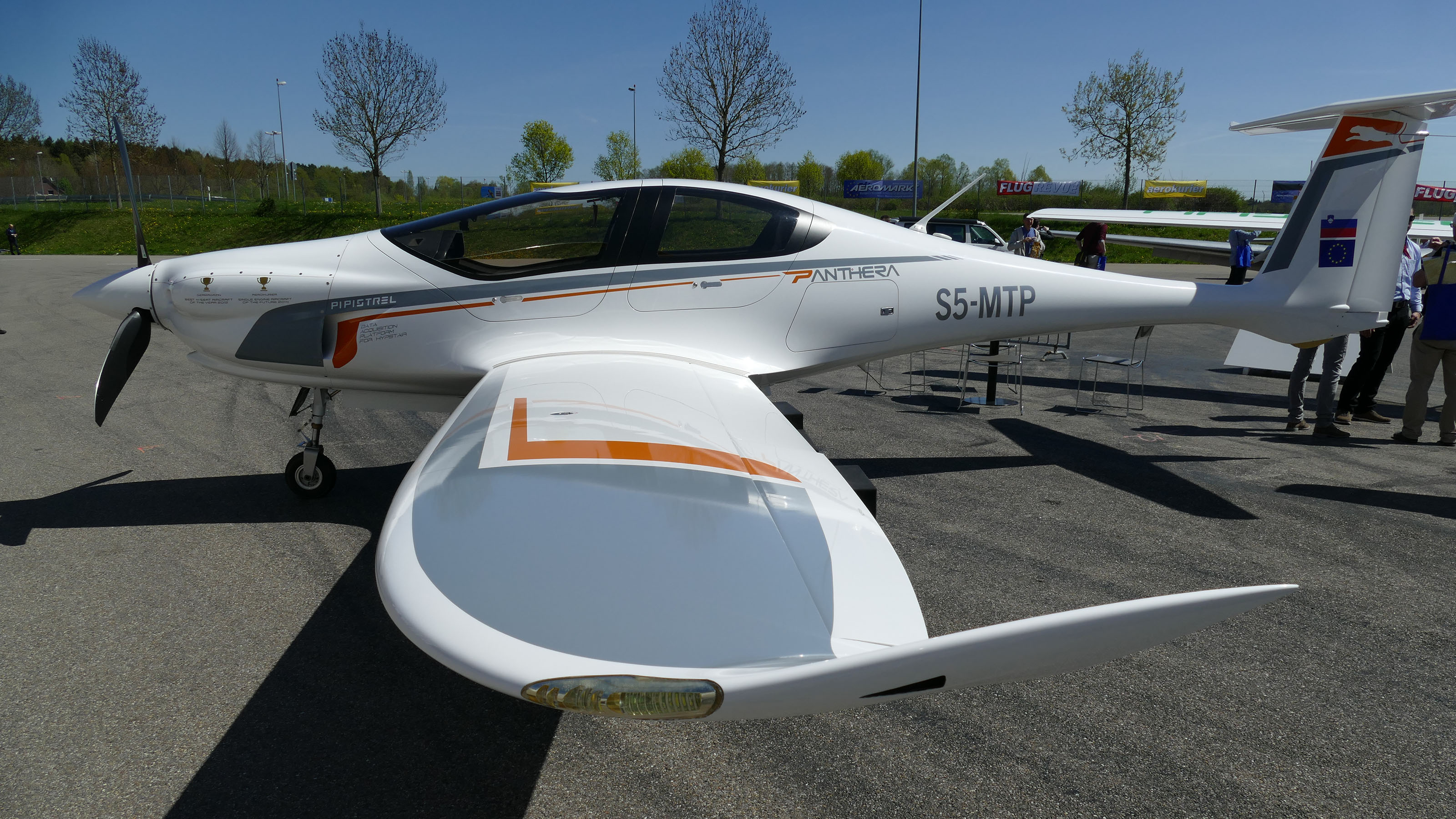
As for Pipistrel’s much-awaited line of Panthera four-seaters, an early 200-hp Lycoming IO-390-equipped airplane was on display. However, officials decided against pursuing an IO-390-powered Panthera when it was announced that the engine would never receive approval to run on auto fuel. Attention has now turned to a Panthera using a mogas-burning 260-hp Lycoming IO-540-V engine. First deliveries of this Panthera are anticipated in 2021, followed by a hybrid-electric variant scheduled to begin flight testing in 2020, and first deliveries in 2023.
Discopter air taxi
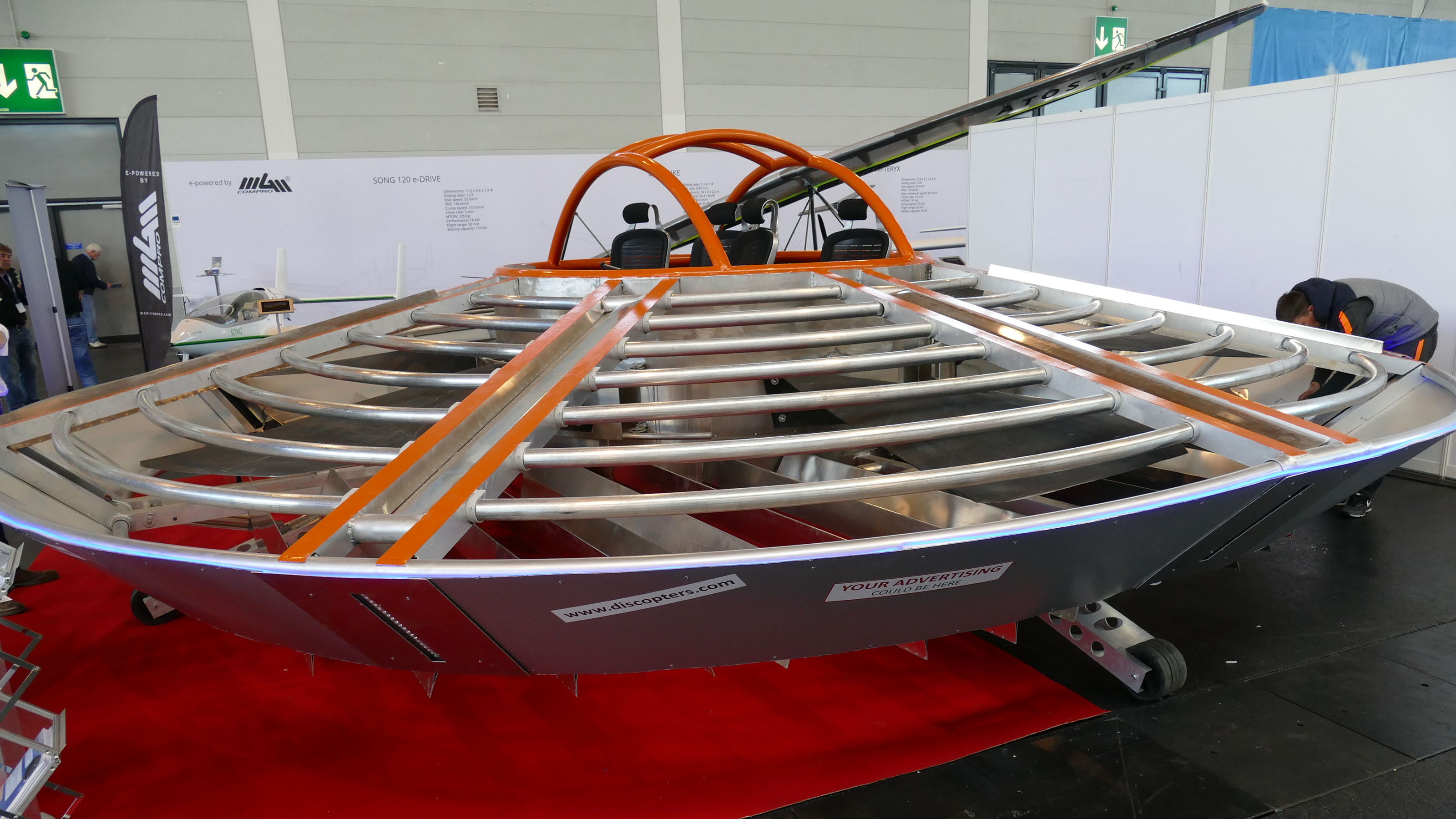
Of late, there has been much promotion of the vertical takeoff and landing (VTOL) urban shuttle concept. The Discopter, however, may raise doubts about rosy predictions. This massive, flying-saucer-like creation is made of a stack of massive circular aluminum tubing, topped by what look like open-air seats for five to nine passengers. Twin, 450-hp automotive engines will power a huge rotor beneath the seating area, enabling a claimed flying distance of up to 540 nm at speeds of 110 to 135 knots. Just imagine—sitting in the breeze atop two 450-hp engines. It’s safer—and less noisy—than a helicopter, Discopter claims, and has “big lifting power” compared to other VTOL projects. It can be yours for $186,000, just as soon as there’s enough money to move the project ahead. A clear plastic box for prospective investors’ business cards was provided next to the Discopter. Only one card was visible.
e-flight aside, there were other news announcements at AERO.
Jet A power for Piper Seminoles
Piper Aircraft announced it would begin producing its popular PA–44 Seminole light twin with Continental Motors’ new 170-hp CD-170 diesel engines. The engines will use Jet A fuel and come with single-lever FADEC (full authority digital engine control) power levers. The CD-170 Seminole, dubbed the Seminole DX, will also come with Garmin’s G1000 NXi. By the switch to Jet A, Piper says that the Seminole DX will appeal to an ever-greater customer base around the world, owing to concerns over avgas availability and cost in many locations.
TBM: There’s an app for them
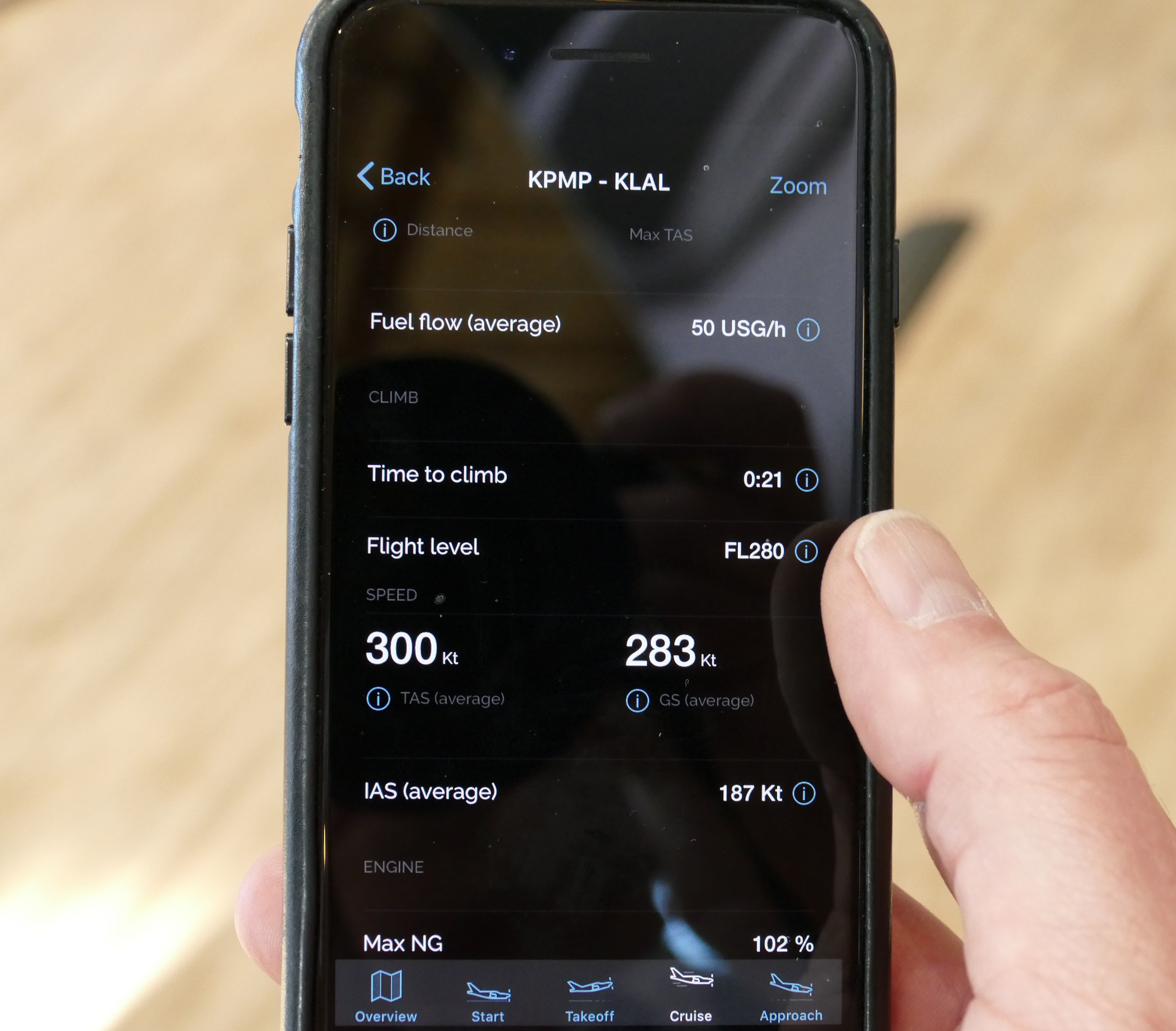
Daher revealed a new smartphone app for the latest TBM 910 and 930 models. The cloud-based app, called “Me & My TBM,” is available for iPhone and Android, and collects and stores vast amounts of data from each flight. Cruise speeds; fuel states; ITTs; remaining fuel loads; oil temperature, pressure, consumption and quantity levels, start, takeoff, cruise, and approach parameters; cost splitting and many, many more engine and flight variables are also delivered via the app. Intervals between scheduled maintenance are also posted, as is maintenance information that can be used to supplement trend monitoring and computerized maintenance tracking and engine health information offered by service provider CAMP Systems, Inc.
Data on the app can also be shared among other TBM owners, and there’s a “virtual assistant” function that acts like a concierge and handling service. Fuel orders, hotel, and taxi reservations can all be arranged using the app, and TBM Care customer support teams can access all flight parameters in less than an hour after a flight.
Search for “Me & My TBM” to download the app, then set up a login name and password.
All current-delivery TBM 910s and 930s are being delivered with the app capability, and Daher is exploring a retrofit method that could let owners of G1000-equipped TBMs having serial numbers 434 and higher. Yet another future option may allow TBMs retrofitted with Garmin’s G600 and GTN 750 displays and navigators to interface with the app.
ForeFlight comes to Europe
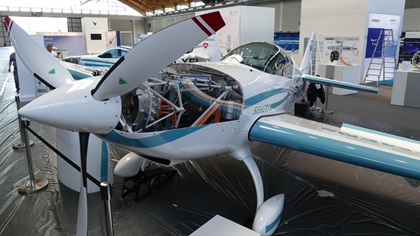
Electronic flight bag provider ForeFlight announced that expanded services will be provided to users flying in Europe beginning this summer. These will include digital VFR charts showing noise-sensitive areas and arrival and departure routes, charts provided by Eurocontrol, and hazardous weather information (icing and turbulence) overlays. IFR charts are also from Eurocontrol. There are three European service packages. The Basic Plus plan (106.99 euros per year) tacks on international flight plan filing, use of European VFR and IFR charts, and weight and balance and logbook functions. The Pro Plus package (213.99 euros per year) adds georeferencing on chart products, chart-on-map capability, global icing and special-use airspace alerts, synthetic vision, and global hazard advisories. The Performance Plus package (320.99 euros per year) contains all of the above plus detailed aircraft performance profiles, highly accurate fuel calculations, and gives information on fuel policies and payload safety checks. No in-flight datalink weather radar imagery is available in Europe because datalink radar services do not yet exist. Neither do any Automatic Dependent Surveillance-Broadcast services. However, ForeFlight users who have Appareo or Scout portable receivers will be able to see traffic returns from any ADS-B-out-equipped aircraft.





